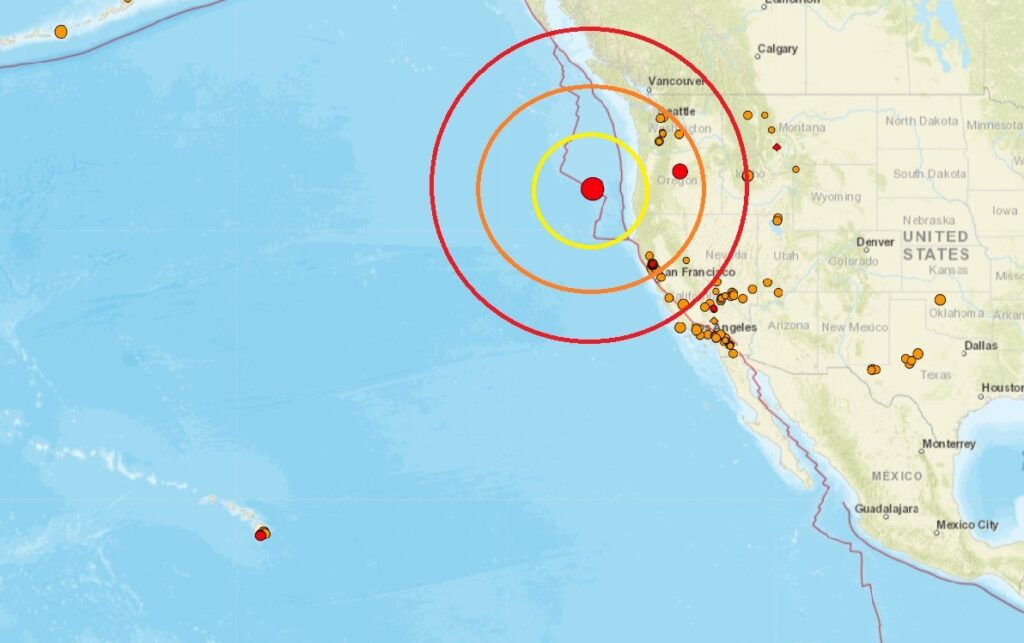
USGS reported a strong 6.0 earthquake has struck off the coast of Oregon at 1:15 pm local time; the National Weather Service National Tsunami Warning Center in Palmer, Alaska says a tsunami is not expected at this time from this earthquake.
USGS initially reported the earthquake as a magnitude 6.1 event but updated it to a 6.0 event; it struck 173 miles west of Bandon, Oregon, located on the central coast of the state and south of the Oregon Dunes National Recreation Area . The strong earthquake struck from a depth of 10 km or 6.2 miles. While more than 2 dozen people reported to USGS they felt the earthquake from the Oregon and California coast, it was too far away to bring many impacts to land.
Within 4 minutes of the earthquake, the National Tsunami Warning Center issued a brief bulletin: “An earthquake has occurred; a tsunami is not expected. Further information will be provided by the United States Geological Survey or the appropriate regional seismic network. This will be the only U.S. National Tsunami Warning Center message issued for this event unless additional information becomes available.”
Tsunamis are giant waves caused by earthquakes or volcanic eruptions under the sea. Out in the depths of the ocean, tsunami waves do not dramatically increase in height. But as the waves travel inland, they build up to higher and higher heights as the depth of the ocean decreases. According to the National Ocean Service, the speed of tsunami waves depends on ocean depth rather than the distance from the source of the wave. According to NOAA, the parent agency over both the National Weather Service and the Tsunami Warning Center, tsunami waves may travel as fast as jet planes over deep waters, only slowing down when reaching shallow waters. While tsunamis are often referred to as tidal waves, tides have little to do with these giant waves. While tsunamis are often referred to as tidal waves, this name is discouraged by oceanographers because tides have little to do with these giant waves.
The Pacific Northwest is susceptible to strong earthquake and tsunami activity. In 2022, scientists with the Washington State Department of Natural Resources modeled the impact of a magnitude 7.5 earthquake on the Seattle Fault, which produced catastrophic tsunami into Washington. Strong earthquakes and tsunami have impacted the west and will continue to do so since the area is surrounded by active faults.